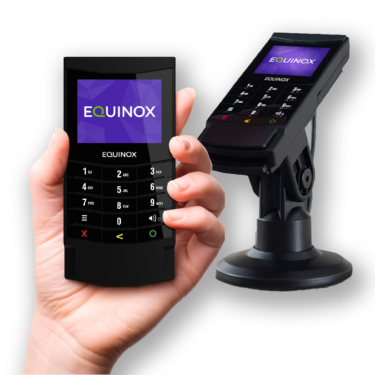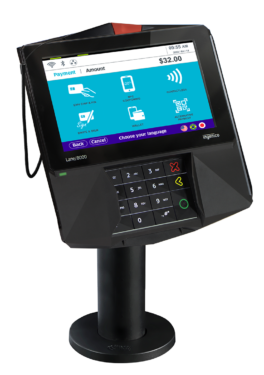In modern retail, your point-of-sale payment terminal is no longer a simple device—it’s key to delivering a seamless customer experience. A reliable payment terminal ensures smooth transactions, builds customer trust, and keeps your operations running efficiently. But how do you know when it’s time to upgrade? Here are five clear signs that your payment terminal might need an upgrade, along with tips to extend its lifespan.
1. Frequent Breakdowns or Connectivity Issues
If your terminal often freezes, crashes, or loses connection during transactions, it’s time to consider an upgrade. Frequent disruptions can frustrate customers and lead to lost sales, especially in busy retail settings. Modern terminals from brands like Ingenico and Equinox are designed with advanced connectivity options, including Wi-Fi, Bluetooth, and 4G, to ensure seamless performance even during peak hours.
What to Look for in an Upgrade:
- Improved connectivity options (e.g., Ethernet, Wi-Fi, or cellular backup).
- Faster processing speeds to handle high transaction volumes.
- Compatibility with the latest software and security updates.
2. Lack of EMV or Contactless Payment Support
 In an era where contactless payments and EMV chip cards are the norm, an outdated terminal without these features could be holding your business back. Customers now expect the ability to tap, dip, or swipe their cards securely, and failing to meet these expectations can result in lost trust and revenue.
In an era where contactless payments and EMV chip cards are the norm, an outdated terminal without these features could be holding your business back. Customers now expect the ability to tap, dip, or swipe their cards securely, and failing to meet these expectations can result in lost trust and revenue.
Ingenico terminals, such as the Link/2500, support a wide range of payment methods, including EMV, NFC, and mobile wallets like Apple Pay and Google Pay. Similarly, Equinox’s Luxe 6200m offers robust support for modern payment technologies, making it easier to cater to today’s tech-savvy customers.
Why Upgrade:
- Stay compliant with industry standards.
- Reduce the risk of chargebacks and fraud.
- Offer customers the convenience they expect.
3. Outdated Security Features
Payment terminal security is non-negotiable. If your terminal is running on older encryption protocols or doesn’t support PCI compliance, it’s a red flag. Cybersecurity threats constantly evolve, and an outdated terminal could expose your business to significant risks.
Modern terminals prioritize security with features like:
- End-to-end encryption (E2EE).
- Tokenization to protect sensitive customer data.
- Regular firmware updates to stay ahead of threats.
Pro Tip: Choose a terminal with an extended warranty or a service plan to ensure you receive timely security updates and technical support.
4. Limited Integration Capabilities
 As businesses grow, so do their operational needs. If your current payment terminal doesn’t integrate well with your POS system, inventory management software, or customer loyalty programs, it’s time to upgrade. Modern terminals are designed to be highly compatible with a wide range of platforms, making it easier to streamline your operations.
As businesses grow, so do their operational needs. If your current payment terminal doesn’t integrate well with your POS system, inventory management software, or customer loyalty programs, it’s time to upgrade. Modern terminals are designed to be highly compatible with a wide range of platforms, making it easier to streamline your operations.
Ingenico and Equinox terminals offer seamless integration with NCR Counterpoint.
By upgrading, you can:
- Simplify your workflows.
- Gain valuable insights from integrated analytics.
- Enhance customer experiences with personalized offers and faster checkout processes.
5. Physical Wear and Tear
Over time, payment terminals can experience significant wear and tear. Buttons may stop responding, screens can become scratched, and card readers might lose sensitivity. While these issues may seem minor, they can lead to operational inefficiencies and a poor customer experience.
Signs your terminal is physically worn out:
- Unresponsive touchscreens or faded displays.
- Damaged card readers or malfunctioning keypads.
- Loose connections or frayed cables.
Investing in a new terminal can solve these problems while giving your checkout area a more modern and professional appearance.
How to Extend the Life of Your Payment Terminal
Upgrading doesn’t always have to be the immediate solution. With proper care and maintenance, you can extend the lifespan of your existing payment terminal. Here are some tips:
1. Use Terminal Stands
 A terminal stand protects your device from accidental drops and improves usability by positioning the terminal at an optimal angle for customers. Look for adjustable stands that are compatible with your terminal model.
A terminal stand protects your device from accidental drops and improves usability by positioning the terminal at an optimal angle for customers. Look for adjustable stands that are compatible with your terminal model.
2. Regular Cleaning
Keep your terminal in top condition by using cleaning cards for the card reader and a microfiber cloth for the screen. Avoid harsh chemicals that can damage sensitive components.
3. Update Software and Firmware
Ensure your terminal is running the latest software to stay protected against security threats and to access new features. Set reminders to check for updates regularly.
4. Invest in Extended Warranties
Extended warranties or service plans from Retail Control Systems provide peace of mind by covering repairs and replacements.
5. Store Properly
Store your terminal in a clean, dry environment when not in use. Avoid exposing it to extreme temperatures or humidity, as these can damage internal components.
Choosing the Right Payment Terminal
When it’s time to upgrade, selecting the right terminal is crucial. Ingenico and Equinox both offer a range of options tailored to different business needs:
- Ingenico Lane/7000: A versatile terminal designed for retail environments, offering advanced security, multiple payment options, and a large touchscreen display.
- Equinox Luxe 8500i: Known for its sleek design and robust functionality, this terminal provides fast transaction speeds and supports a wide range of integrations.
By upgrading to a modern payment terminal, you can enhance your business operations, reduce downtime, and deliver a better experience for your customers.
Your payment terminal is a critical component of your business’s success. If you’re experiencing frequent issues, lack essential features, or simply want to stay ahead of the curve, it’s time to consider an upgrade. Ingenico and Equinox terminals from RCS offer reliable, future-ready options that can help you meet today’s demands and tomorrow’s challenges.
Take proactive steps to extend the life of your terminal while planning for future upgrades. With the right tools and strategies, you can ensure smooth operations and satisfied customers for years to come.
